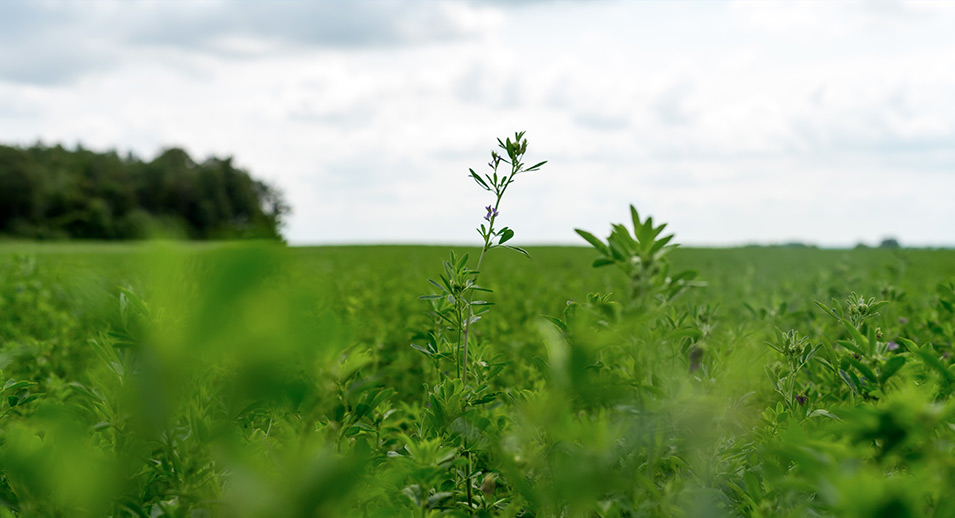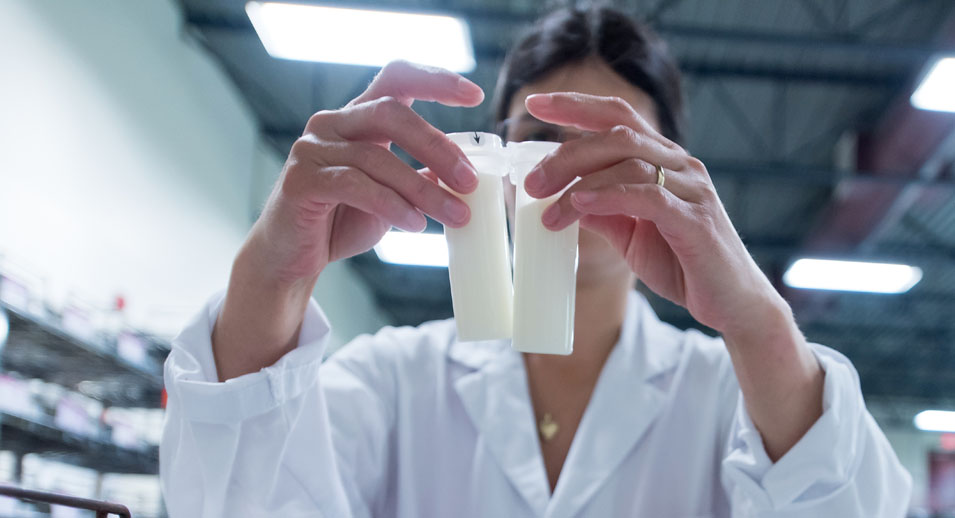Strategies to improve winter survival of legumes
- May 14, 2021
- Le Producteur de Lait Québécois Magazine
Damage caused to legume crops during the winter can have serious financial consequences for dairy farms. The decrease in yield is sometimes so extensive that you have to overseed the area or destroy the pasture. How can you improve the odds of avoiding this kind of situation?

During the winter, forage plants may be subject to many stresses, including subfreezing temperatures without a suffi cient snow cover, excess soil moisture, the presence of ice, and diseases. Among the future effects of climate change, experts anticipate a decrease in plant hardiness, a reduction of snow cover, and increased winter rainfall and freeze-thaw cycles. With these changes, legume survival is expected to become increasingly difficult in the future. To help legumes survive the winter, many strategies are available.
Carefully select seeds
The probability of winter survival varies greatly depending on the forage species. That’s why it is always important to select species that have demonstrated hardiness in our climate. The cultivars of any given species do not all have the same tolerance for cold. The improved persistence of cultivars is possible thanks to genetic selection. Choosing cultivars with a better winter survival score helps to improve the resilience of our pastures.
According to the researchers, the presence of one or more grasses also improves the persistence of the legume stand. Mixed forage crops also demonstrate benefits over single type crops!
The soil: your ally
Throughout the pasture’s productive life, the soil plays a crucial role in winter survival. First of all, well-drained soil will improve the plants’ resistance to cold, reduce the degree of frost in the soil and prevent ice crust formation. Excess water must be avoided at any cost.
Soil fertility also plays a key role. Several studies have shown that potassium (K) and phosphorus (P) have a positive effect on legume resistance to cold. However, before you even think of fertilizing your soil, it is important to ensure that you have adequate pH. Fertilizing soil with a poor pH is a waste of money, because a non-optimal pH makes certain fertilizing elements less accessible by the plant. For pastures, a pHwater between 6.5 and 7.0 is recommended. Consult your agri-enviromental fertilization plan (AEFP) to verify the quantity of lime and fertilizer to apply in your fields.
Importance of cutting management
Cutting management is the factor that has the greatest impact on winter survival of legume crops. Intensive management reduces the capacity of legumes to accumulate reserves, which reduces their persistence. In addition, fall harvesting has a negative effect on legume persistence. It hinders the plants’ accumulation of reserves, as well as reduces the capacity of the fields to retain snow, a very efficient insulator!
According to a recent study conducted in Québec, fall harvesting only generates a short-term benefit for pasture yield. Although this practice results in additional yield in the year it is adopted, it has no effect on the overall yield of a pasture that has been in production for the past four years (see Table 1). This is due to a yield decrease in the years after fall harvesting. Therefore, crops should only be mowed in the fall as a last resort. If it is absolutely necessary, you should leave at least 10 cm (4 inches) of stubble in order to capture a minimum amount of snow. You must also allow a minimum period of 50 days between the last summer harvest and the fall harvest. This will allow the legumes time to accumulate a minimum reserve to survive the winter.
TABLE 1. EFFECT OF CUTTING MANAGEMENT ON YIELD, NUTRITIVE VALUE, ESTIMATED MILK PRODUCTION PER HECTARE, AND PROPORTION OF ALFALFA DURING THE FOUR YEARS FOLLOWING THE ESTABLISHMENT OF AN ALFALFA-BASED FORAGE MIXTURE*.
| AVERAGE VALUES FOR FOUR YEARS OF PRODUCTION | |||
CUTTING SCHEDULE | SEASONAL YIELD (T DM/HA) | TOTAL DIGESTIBLE NUTRIENTS (%) | ESTIMATED MILK PRODUCTION (T/HA) | PROPORTION OF ALFALFA (% DM) |
Early bud + fall cut | 5.6 | 65.3 | 10.3 | 48 |
Early bud | 6.0 | 63.5 | 10.9 | 58 |
Early flower + fall cut | 7.9 | 60.6 | 13.4 | 60 |
Early flower | 8.1 | 58.2 | 13.4 | 72 |
*Data measured on three sites in different regions of Quebec.
Adapted from Bélanger et al., 2020.
Key points from Table 1:
Also always remember that over the pasture’s total lifecycle, harvesting at first bloom without harvesting in the fall can maximize winter survival of alfalfa. This strategy also maximizes milk production per hectare, based on nutritional value and yield.
SUMMARY OF RECOMMENDATIONS
- Select species that have proven their ability to survive
our winters. - Choose a cultivar with good winter survival.
- Sow one or more legumes in combination with one or
more grasses. - Verify/improve soil drainage.
- Fertilize and lime your fields adequately: consult the AEFP.
- Give priority to mowing during the first bloom of alfalfa.
- Avoid mowing in the fall. If there are no other choices:
- Wait at least 50 days after the previous harvest.
- Leave at least 10 cm (4 inches) of stubble.
- Consider planting windbreak hedges to increase snow
accumulation.
In order to make informed decisions that will help increase the profitability of your operation, it is important to walk your fields in the spring to assess the state of your forage stands. For more information, read this article from our archives: Did your alfalfa stand survive winter?











